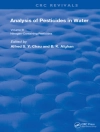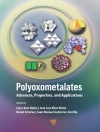Hands-on guide for scientists and engineers on how to use SQUID technology
This practical book covers SQUID (superconducting quantum interference device) readout electronics and magnetometric systems. It illustrates their many practical applications in measuring extremely subtle magnetic fields and shows how the technique is developing into an enabling technology for many applications, such as biomagnetic imaging and geophysical prospecting. Clear and comprehensive, the book builds a bridge for scientists and engineers to fill in potential know-how gaps for all who work on SQUID systems and their practical applications. It helps make key words like readout electronics, flux quantization, Josephson effects, and noise contributions completely understandable to all who design and use simple and robust SQUID systems.
Beginning with an introduction to the subject, SQUID Readout Electronics and Magnetometric Systems for Practical Applications offers in-depth chapter coverage of: Josephson junctions; dc SQUID’s I-V characteristics and its bias modes; functions of the SQUID’s readout electronics; direct readout scheme (DRS); SQUID magnetometry system and SQUID parameters; flux modulation scheme (FMS); and flux feedback concepts and parallel feedback circuit. Other sections examine: analyses of the ‘series feedback coil (circuit)’ (SFC); weakly damped SQUID; two-stage and double relaxation oscillation readout schemes; and radio-frequency (rf) SQUID.
· Provides a unique view of how simplicity and robustness are crucial for practical SQUID systems in applications
· Focuses on the readout electronics of SQUID systems, particularly the advantages and disadvantages of the various systems
· Helps materials scientists, physicists, and engineers overcome various major know-how barriers in order to understand the important challenges and to design practical SQUID systems
· Largely documents the joint achievements accomplished in the cooperation between SIMIT and FZJ in the field of superconducting electronics
SQUID Readout Electronics and Magnetometric Systems for Practical Applications is an excellent book for all materials scientists, electrical engineers, and physicists who can benefit from SQUID systems and their applications. It will also be of great benefit to analytical laboratories in industry, manufacturers of laboratory equipment, and systems engineers.
Daftar Isi
Preface ix
Acknowledgments xi
1 Introduction 1
1.1 Motivation 1
1.2 Contents of the Chapters 3
References 8
2 Josephson Junctions 9
2.1 Josephson Equations 9
2.2 RCSJ Model 9
References 13
3 dc SQUID’sI–V Characteristics and Its Bias Modes 15
3.1 SQUID’s I–V Characteristics 15
3.2 An Ideal Current Source 19
3.3 A Practical Voltage Source 19
References 21
4 Functions of the SQUID’s Readout Electronics 23
4.1 Selection of the SQUID’s Bias Mode 23
4.2 Flux Locked Loop (FLL) 23
4.2.1 Principle of the FLL 24
4.2.2 Electronic Circuit of the FLL and the Selection of the Working Point 25
4.2.3 “Locked” and “Unlocked” Cases in the FLL 28
4.2.4 Slew Rate of the SQUID System 29
4.3 Suppressing the Noise Contribution from the Preamplifier 29
4.4 Two Models of a dc SQUID 29
References 31
5 Direct Readout Scheme (DRS) 33
5.1 Introduction 33
5.2 Readout Electronics Noise in DRS 33
5.2.1 Noise Characteristics of Two Types of Preamplifiers 34
5.2.2 Noise Contribution of a Preamplifier with Different Source Resistors 37
5.3 Chain Rule and Flux Noise Contribution of a Preamplifier 39
5.3.1 Test Circuit Using the Same Preamplifier in Both Bias Modes 40
5.3.2 Noise Measurements in Both Bias Modes 42
5.4 Summary of the DRS 43
References 43
6 SQUID Magnetometric Systemand SQUID Parameters 45
6.1 Field-to-Flux Transformer Circuit (Converter) 45
6.2 Three Dimensionless Characteristic Parameters, ????c, Γ, and ????L, in SQUID Operation 48
6.2.1 SQUID’s Nominal Stewart-Mc Cumber Characteristic Parameter ????c 49
6.2.2 SQUID’s Nominal Thermal Noise Parameter Γ 52
6.2.3 SQUID’s Screening Parameter ????L 54
6.2.4 Discussion on the Three Characteristic Parameters 55
References 56
7 Flux Modulation Scheme (FMS) 61
7.1 Mixed Bias Modes 61
7.2 Conventional Explanation for the FMS 63
7.2.1 Schematic Diagram of the FMS 63
7.2.2 Time Domain and Flux Domain 65
7.2.3 Flux Modulation 66
7.2.4 Five Additional Notes 71
7.3 FMS Revisited 73
7.3.1 Bias Mode in FMS 74
7.3.2 Basic Consideration of Synchronous Measurements of Is and Vs 74
7.3.3 Experimental Synchronous Measurements of Δi and VRs 75
7.3.4 Transfer Characteristics of the Step-Up Transformer 78
7.3.5 V(Φ) Comparison Obtained by DRS and FMS 80
7.4 Conclusion 81
References 82
8 Flux Feedback Concepts and Parallel Feedback Circuit 85
8.1 Flux Feedback Concepts and History 85
8.2 SQUID’s Apparent Parameters 87
8.3 Parallel Feedback Circuit (PFC) 89
8.3.1 Working Principle of the PFC in Current Bias Mode 89
8.3.2 Working Principle of PFC in Voltage Bias Mode 94
8.3.3 Brief Summary of Qualitative Analyses of PFC 97
8.4 Quantitative Analyses and Experimental Verification of the PFC in Voltage Bias Mode 99
8.4.1 The Equivalent Circuit with the PFC in Voltage Bias Mode 99
8.4.2 Introduction of Two Dimensionless Parameters r and Δ 101
8.4.3 Numerical Calculations 103
8.4.4 Experimental Results 108
8.4.5 Noise Comparison and Interpretation 111
8.4.6 Two Practical Designs for PFC 114
8.5 Main Achievements of PFC Quantitative Analysis 116
8.6 Comparison with the Noise Behaviors of Two Preamplifiers 117
References 119
9 Analyses of the “Series Feedback Coil (Circuit)” (SFC) 121
9.1 SFC in Current Bias Mode 121
9.1.1 Working Principle of the SFC in Current Bias Mode 121
9.1.2 Noise Measurements of a Weakly Damped SQUID (Magnetometer) System with the SFC 123
9.2 The SFC in Voltage Bias Mode 125
9.3 Summary of the PFC and SFC 127
9.4 Combination of the PFC and SFC (PSFC) 129
9.4.1 PSFC Analysis Under Independence Conditions 129
9.4.2 PSFC Experiments and Results 132
9.4.3 Conclusion of the PSFC 136
References 137
10 Weakly Damped SQUID 139
10.1 Basic Consideration of Weakly Damped SQUID 139
10.2 SQUID System Noise Measurements with Different ????c Values 140
10.3 Statistics of SQUID Properties 143
10.4 Single Chip Readout Electronics (SCRE) 147
10.4.1 Principle of SCRE and Its Performance 148
10.4.2 Equivalent Circuit of SCRE 149
10.4.3 Differences Between the Conventional Version of Readout Electronics with an Integrator and SCRE 152
10.4.4 Two Applications of SCRE 153
10.5 Suggestions for the DRS 154
References 155
11 Two-Stage and Double Relaxation Oscillation Readout Schemes 157
11.1 Two-Stage Scheme 158
11.2 ROS and D-ROS 164
11.3 Some Comments on D-ROS and Two-Stage Scheme 168
References 169
12 Radio-Frequency (rf) SQUID 171
12.1 Fundamentals of an rf SQUID 171
12.2 Conventional rf SQUID System 176
12.2.1 Block Diagram of rf SQUID Readout Electronics (the 30MHz Version) 176
12.2.2 rf SQUID System Noise in the 30 MHz Version 178
12.3 Introduction to Modern rf SQUID Systems 180
12.3.1 Magnetometric Thin-Film rf SQUID and a Conventional Tank Circuit with a Capacitor Tap 181
12.3.2 Improved rf SQUID Readout Electronics 184
12.3.3 Tank Circuit Operating Up to 1 GHz with Inductive Coupling 188
12.3.4 Modern rf SQUID System 190
12.3.4.1 Microstrip Resonator 190
12.3.4.2 Coplanar Resonator 192
12.3.4.3 Instability of rf Bias Current 194
12.3.5 Substrate Resonator 196
12.3.6 Regarding the rf SQUID’s Thermal Noise Limit 200
12.4 Further Developments of the rf SQUID Magnetometer System 201
12.4.1 Achievement of a Very Large ????Vrf/????Φ in a Low-Impedance System 201
12.4.2 Multiturn Input Coil for a Thin-Film rf SQUID Magnetometer with a Planar Labyrinth Resonator 204
12.4.3 Modern rf SQUID Electronics 208
12.5 Multichannel High-Tc rf SQUID Gradiometer 211
12.6 Comparison of rf SQUID Readout with dc SQUID Readout 214
12.7 Summary and Outlook 215
References 218
Index 225
Tentang Penulis
Xiaoming Xie, Executive Director of the Center for Excellence in Superconducting Electronics, Chinese Academy of Sciences, received his Ph.D in 1990 from Shanghai Institute of Microsystem and Information Technology (SIMIT). He worked as a Postdoc at ESPCI, France, on high-temperature superconductivity followed by research on electronics manufacturing and reliability. He switched back to superconductivity research with a focus on superconducting electronics in 2005. He is the author of ca. 200 scientific publications with about 2000 citations and is the holder of 50 patents.
Yi Zhang received his Ph.D. in 1990 from the University of Gießen, Germany. His research at the Forschungszentrum Jülich is dedicated to the fabrication and application of SQUIDs. He has been awarded various Professor titles at the University of Peking, Shanghai Jiao Tong University, Tongji University and SIMIT CAS, and from Jilin University. In 2001, he worked at the University of California, Berkeley, in Prof. John Clarke’s group, and was a co-author of the ‘SQUID Handbook’, edited by John Clarke and Alex. I. Braginski (WILEY-VCH). He has contributed to more than 150 publications with about 2000 citations, and is one of the leading scientists for SQUID research worldwide. Several of his papers were cited in the book ‘100 Years of Superconductivity’, edited by Horst Rogalla and Peter H. Kes (CRC Press).
Hui Dong received her Ph.D. in 2011 from SIMIT CAS. 2008 – 2010 she was a visiting student at Forschungszentrum Jülich, Germany, and a visiting scholar at the University of California, Berkeley. She is currently Associate Professor at SIMIT CAS. Her research interests include SQUID system optimization and applications of ultra-low field magnetic resonance imaging (ULF MRI). She has authored and co-authored about 30 scientific publications, and she holds 8 patents.
Hans-Joachim Krause received his Ph.D. in Physics from RWTH Aachen, Germany in 1993. He initiated the Non-destructive Evaluation Group at Forschungszentrum Jülich, working on projects with industrial partners for the development of SQUID systems for the magnetic testing of aircraft parts, pre-stressed concrete bridges and other structures. In summer 2011, he was a Visiting Professor at Université Pierre et Marie Curie, Paris, France. Currently, he leads the Magnetic Sensing Group in Jülich, focusing on SQUID sensors, magnetic biosensing, low field nuclear magnetic resonance, magnetic immunoassays and magnetic nanoparticle actuation. In 2017, he was appointed Professor of Physics at the University of Applied Sciences, Aachen, Germany. He has co-authored more than 150 scientific publications with over 1500 citations.
Guofeng Zhang received his Ph.D. in microelectronics and solid state electronics from SIMIT CAS in 2012. From 2009 – 2011 he was a visiting Ph.D. student at the Forschungszentrum Jülich, before becoming Assistant and in 2015 Associate Professor at SIMIT CAS. His research interests include SQUID design and fabrication, and SQUID applications in biomagnetism, geophysics and related areas. He has authored and co-authored about 20 scientific publications, and he holds 5 patents.












